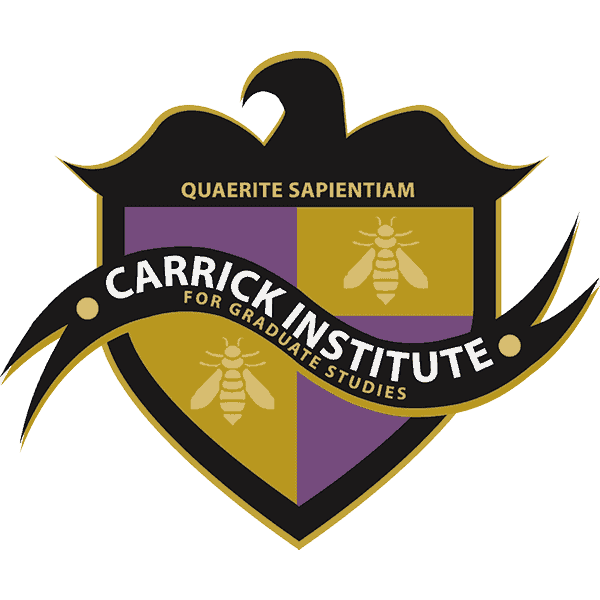Visual Vestibular Integration II: Rehabilitation of Vertical and Torsional Eye Movements
Learn the physiology of visual-vestibular integration for assessment and rehabilitation of the nervous system.
Who is this class for?

Visual Vestibular Integration II: Rehabilitation of Vertical and Torsional Eye Movements will appeal to any healthcare practitioner wanting to learn an in-the-trenches approach to solving visual-vestibular integration issues in their patienst.
The healthcare professionals that can attend this program are MD, DC, DO, PT, OT, ATC, LMT, ND, LAc, PA, NP, and CA (If accompanied by DC).

The Treatment Approach Taught in Visual Vestibular Integration II: Rehabilitation of Vertical and Torsional Eye Movements
Dr. Schmoe will be giving attending scholars insight into his treatment approaches which involve a combination of active, passive, and brain-based rehabilitative strategies.
Why Learn About Visual-Vestbular Integration?
Patients feeling dizzy? Unsteady? Motion sensitive? Eye movement issues? Learn how to assess and rehabilitate these patients.

Learn physical and neurological examination skills that you can use right away to help your patients more effectively. Learn about the integration between the visual and vestibular systems and how to leverage those systems in rehab.
Visual Vestibular Integration II - NEW Topics Covered
Visual Vestibular Integration: Rehabilitation of Vertical and Torsional Eye Movements Course Objectives
- What are the integrators of Vertical and Torsional Eye Movements?
- The Midbrain and Vertical Eye Movements
- The Cerebellum and Vertical Eye Movements
- The Vestibular System and Vertical Eye Movements
- The Autonomic System and Vertical Eye Movements
- The Frontal Lobe and Vertical Eye Movements
- The Otolithic System and Torsional Eye Movements
- The Limbic System and Vertical Eye Movements
- The Brainstem and Vertical/Torsional Eye Movements Neural Integrators of
- Vertical Gaze Holding
- Optic Flow
- The Vertical Optokinetic System
- Training Vertical Eye Movements in Virtual Reality
- The Proprioceptive System and Pitch Plane Integration
- Complex Cognitive Function and the Vertical Eye Movement Systems
- Neurology of Vertical Saccades
- Neurology of Vertical Pursuits
- Downward Pursuits vs Upward Pursuits
- Circular Pursuits
- RiMLF integration
- Interstitial Nucleus of Cajal
- The TMJ and Vertical Eye movements
- Midline Cerebellum and Torsional Eye Movements
- Vestibular Nuclei and Vertical Eye Movements
- Post Concussion VID: Torsional OKN Challenge
- Low tech Neuro-Visual therapies
- Concussion and the Vertical Eye Movement System
- The Midbrain and Concussion
- Torsional Eye Movements in Visually Induced Dizziness
- Vertical Eye Movements in Visually Induced Dizziness
- Eye movements in Sport
- Neuroscience of Sport
- Eye Movements Challenges in Posturography
- PPPD, MdDS, VID
- Subjective Visual Vertical
- Dynamic Subjective Visual Vertical
- MdDS Rehabilitation with Virtual Reality
- MdDS Low tech rehabilitation
- Neuro-Postural System and Eye Movements
- Red Flags in Vertical and Torsional Eye Movements
- Stroke and Vertical Eye Movements
- VOG: Assessment and Challenges
- vHIT and vertical VOR
- Retitrack and Retinal Tracking of Vertical drift, ocular tremor, nystagmus.
- Ophthalmoscope Vertical Nystagmus assessment
- Clinical Applications with Virtual Reality
- The Visual-Vestibular Examination
- Maddox Rod Assessment at the Bedside
- Immersive Virtual Reality and the Cerebellum
- The Cervical Spine and Vertical Eye Movements
- Case Studies, Flow Charts and Diagrams
Presenting Faculty

Dr. Schmoe is the founder and director of The Functional Neurology Center. Over the past 13 years, he has been working with patients with complex neurological dysfunction. He manages patients from all over the country as well as international. He has treated thousands of patients with head injuries, vertigo, dysautonomia, dizziness, movement disorders, neuro-degenerative and developmental disorders. He treats patients of all ages. He enjoys seeing the most complex cases Integrating neuro-rehab, manual therapy, lab work and nutrition. He has completed extensive post-graduate training in functional neurology, neuroimmunology and functional medicine.
He is a Diplomate of the American Chiropractic Neurology Board DACNB, Fellow of the American College of Functional Neurology and was the valedictorian of the 2015 FABBIR Carrick Institute TBI program. #carricktrained. He graduated from NWHSU in 2011 with his Doctorate of Chiropractic. He graduated from MNSU Mankato in 2007 with his Exercise Science Degree. He has completed thousands of hours of post graduate neurological training in vestibular rehab, autonomic disorders, complex chronic pain, developmental disorders, neurochemistry, immunology and various manual therapy techniques.
Course Information
tuition
$699
Included In Your Tuition
15 Neurology Hours - Approved by the ACNB / ACFN)
Receive any future updates to the course videos or other materials
All-Access to the digital recording of the class
Re-attendance – Retake the class on-site, via Livestream, or via online, self-paced learning as many times as you’d like as an audit.*
3 months of unlimited access to Medline
For more information on CE/CME eligibility, visit https://carrickinstitute.com/ceinfo/
Continuing Education
Continuing education requirements to maintain certification status through a professional association are usually separate from the state board’s requirements. In order to maintain your certification status in your state please submit a State Continuing Education Application Form.
*We cannot guarantee approval for individual state CEUS. Each state has different rules and regulations. State Applications need to be submitted at least 90 days prior to the state date of your course*
Recertification / Diplomate Requirements: All Carrick Institute courses are approved by the ACFN & ACNB.



